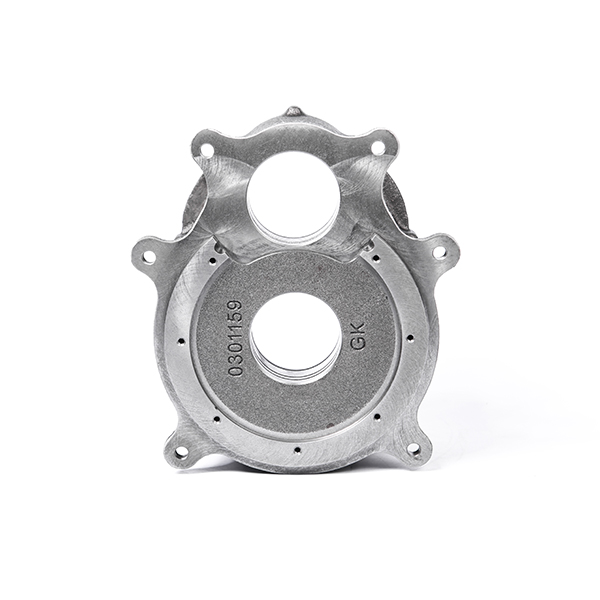Mobile:+86-311-808-126-83
Email:info@ydcastings.com
pump body casting
Understanding Pump Body Casting A Key Element in Pump Manufacturing
Pump body casting plays a critical role in the manufacturing of pumps, which are essential components in various industries, including water management, oil and gas, chemical processing, and more. The efficiency and reliability of pumps significantly depend on the quality of the castings used in their construction. This article will delve into the importance of pump body casting, explore the casting processes involved, and highlight the key materials used in this vital manufacturing step.
The Importance of Pump Body Casting
The pump body is one of the most crucial components of a pump, as it houses the impeller and facilitates the flow of fluids. Therefore, the design and integrity of the pump body affect the performance, efficiency, and durability of the pump. High-quality castings ensure that the pump can withstand high pressures and corrosive environments, minimizing the risk of failure during operation.
Moreover, the casting process allows for complex geometries that can enhance the performance of the pump. The ability to create intricate designs means that pump bodies can be engineered for optimized fluid dynamics, reducing turbulence and improving flow rates. As industries demand more efficient and reliable pumping solutions, the need for advanced casting techniques continues to grow.
Casting Processes
There are several casting methods employed in the manufacturing of pump bodies, each with its unique advantages and applications. The most common methods include
1. Sand Casting This traditional method involves creating a sand mold in which molten metal is poured. Sand casting is relatively inexpensive and suitable for producing large components, making it a popular choice for pump bodies. However, it may not achieve the same level of detail and surface finish as other methods.
2. Investment Casting Also known as lost-wax casting, this process involves creating a wax pattern of the desired pump body shape, which is then coated with a ceramic material. Once the ceramic hardens, the wax is melted away, leaving a cavity for the molten metal. Investment casting allows for high precision and intricate designs, making it ideal for complex pump bodies.
3. Die Casting In this process, molten metal is injected under pressure into a metal mold, resulting in high-quality castings with excellent surface finishes and dimensional accuracy. Die casting is typically used for smaller pump components where consistency and performance are paramount.
pump body casting

4. Shell Casting This method combines elements of sand and investment casting, where a thin shell of metal is formed around a pattern. Shell casting can produce high-dimensional accuracy and is often used in applications requiring a fine finish.
Materials Used in Pump Body Casting
The choice of material for pump body casting is crucial, as it directly impacts the performance and longevity of the pump. The most commonly used materials include
- Cast Iron Known for its excellent wear resistance and machinability, cast iron is widely used for pump bodies. It can withstand high pressure and is suitable for a variety of fluids, from water to corrosive liquids.
- Aluminum Alloys Lightweight and corrosion-resistant, aluminum castings are often used in applications where weight reduction is critical. They are well-suited for portable and residential pumps.
- Stainless Steel For applications that involve aggressive or corrosive fluids, stainless steel castings are preferred. They offer superior corrosion resistance and strength, making them ideal for chemical and food processing pumps.
- Bronze Often used in marine and industrial applications, bronze castings provide excellent corrosion resistance and durability, which are essential for pumps operating in harsh environments.
Conclusion
Pump body casting is a fundamental aspect of pump manufacturing that greatly influences the performance, efficiency, and lifespan of pumps. As technology advances, casting processes are becoming more sophisticated, allowing for the production of high-quality, intricately designed pump bodies that can meet the growing demands of various industries. By selecting the appropriate casting method and material, manufacturers can ensure that their pumps operate reliably in the most challenging conditions, contributing to the overall effectiveness of fluid management systems worldwide.
-
Why Should You Invest in Superior Pump Castings for Your Equipment?NewsJun.09,2025
-
Unlock Performance Potential with Stainless Impellers and Aluminum End CapsNewsJun.09,2025
-
Revolutionize Your Machinery with Superior Cast Iron and Aluminum ComponentsNewsJun.09,2025
-
Revolutionize Fluid Dynamics with Premium Pump ComponentsNewsJun.09,2025
-
Optimizing Industrial Systems with Essential Valve ComponentsNewsJun.09,2025
-
Elevate Grid Efficiency with High-Precision Power CastingsNewsJun.09,2025











